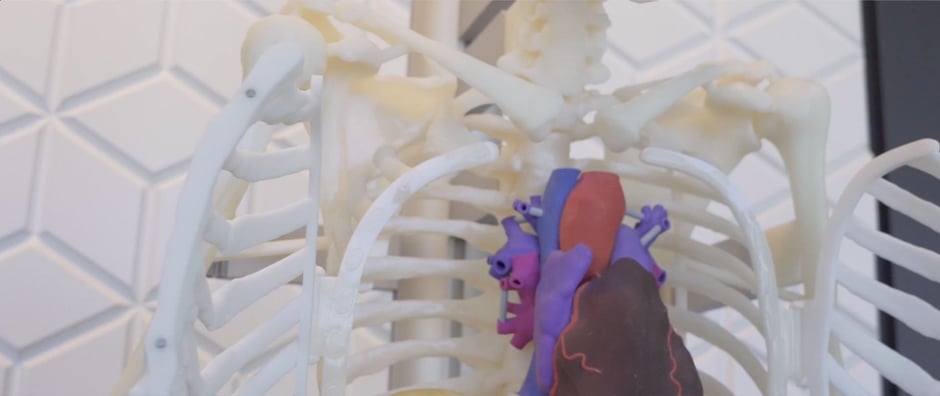
3D Systems offers both 3D printers and software for creating FDA-cleared, diagnostic-quality anatomic models. You can select from a broad range of materials capable of biocompatibility and sterility to 3D print on technologies that include ColorJet Printing, MultiJet Printing, Stereolithography and Selective Laser Sintering.
Since each patient's anatomy is different, patient-specific anatomic models provide an opportunity to visualize and plan surgeries prior to entering the operating room. In addition, you can use anatomic models to educate patients and their families on an upcoming procedure.
Advanced Software
Validated Printers and Proven Materials
Models printed in flexible, rigid, opaque and clear materials
Translucent and opaque models printed in our high-strength materials*
Full-color anatomic models to aid in visualization of complex structures
Strong, durable models in medical-grade nylon materials*
*Materials capable of biocompatibility and sterility
Choose Your Optimal Mix of Anatomic Model Solutions
You can count on 3D Systems for a broad range of anatomic model solutions—from design to delivery. Whether you are looking for a way to create a digital 3D model from DICOM, you already have a design file and need a printing service, or you need an end-to-end solution, we have you covered. Solutions include:
- Hybrid Digital (D2P + VR) Service: Integrate image segmentation and VR capabilities in your lab; then, upload design files to 3D Systems for 3D printing your anatomic models within our ISO 13485-certified facilities.
- End-to-End Validated Workflows: Adopt our complete FDA-cleared workflow, including advanced software and validated printers for anatomic model production at the point-of-care.
- Additional Services: Collaborate with us and go beyond anatomic models with surgical planning support or outsource device production not available or possible on-site.
- Full-Service Model: Simply submit your medical imaging data and 3D Systems’ engineers will design and 3D print your patient-specific 3D printed anatomic models, which you can use for diagnostic and patient education purposes.
Ready to discuss your next case? Contact us to learn about anatomic model material, technology, and services.
Products for Anatomic Models
ProJet MJP 2500/2500 Plus
MultiJet printing quality, speed and ease of use made accessible
SLA 750
Industrial-scale additive manufacturing solution for stereolithography
SLS 380
Industrial-scale, process controlled additive manufacturing solution for selective laser sintering
DICOM to Print
Advanced Visualization Software